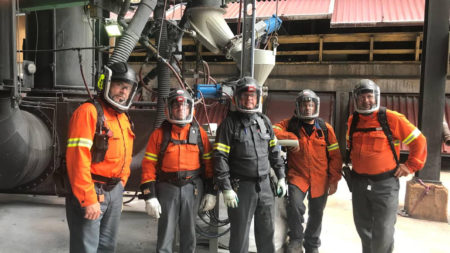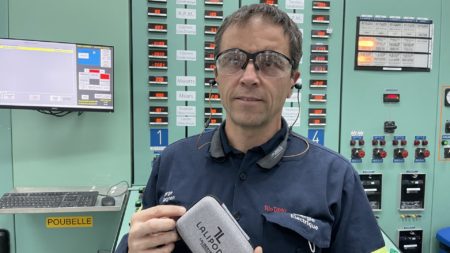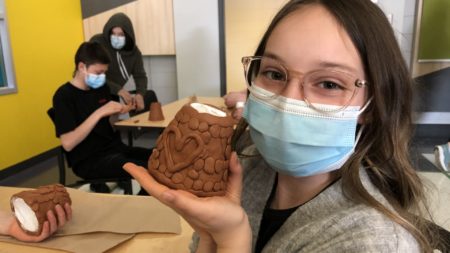Inclined Seal Pots Installed at Grande-Baie Works

Pictured, from left to right: Gervais Latullipe, Marc Dufour, Michel Côté, Michel Gravel and Laurent Grenier. Absent: Carol Imbeault, Raymond Emond, Matthieu Tremblay and Frédéric Tremblay.
Since July 2021, inclined seal pots have been in place and operational at the Grande-Baie Works gas treatment centre, and they have delivered the desired results. As employees no longer need to clean each of the 66 filtration units, various occupational health and safety risks have been eliminated. In addition, operational stability and performance have been improved.
When asked why Grande-Baie Works went ahead with this project of installing inclined seal pots, Michel Côté, Process Technician, Cleaning and Environment, said that it was critical to implement an automation solution that reduced workers’ exposure to contaminants.
Côté explained, “Previously, the sideways position of the scrim cloth of our seal pots made the pots more susceptible to blockages. These blockages are caused by scale. Scale is our biggest enemy because it hinders fluidisation in the equipment. As there was no automated process to counteract scale buildup, employees had to manually clean the filtration units on a daily basis, which exposed them to various contaminants.”
As a result of these inclined seal pots being developed in line with workers’ needs, air can continue to pass through the equipment despite any scale buildup because the top part continues to allow fluidisation. The equipment can thus continue doing its job of moving material through the process. Automation therefore promotes operational stability and spares employees from being exposed to dust that has been in contact with the raw gas of the pots.
Côté added, “We developed this project as a team. A prototype was tested for a year to ensure that it functioned properly. Thanks to the engineering team led by Laurent Grenier and the companies Technosoude, Moreau, Électricité Grimard, Shipshaw Électrique, Norda Stelo, Engrenage Provincial and the Rio Tinto Information Technology Working Group, the work was completed in only ten months. A total of $3.5 million was allocated by the facility’s investment committee. The project is now complete, with our objectives having been met.”


